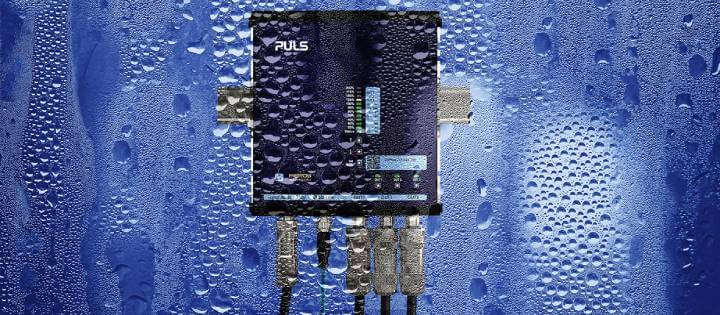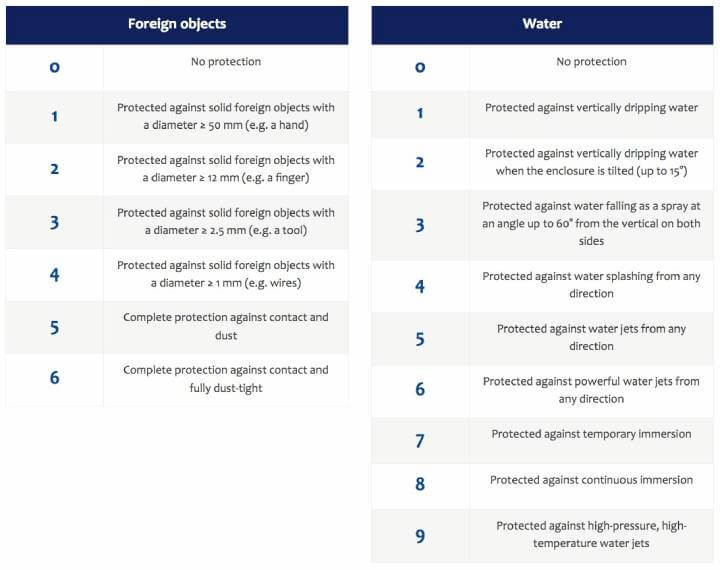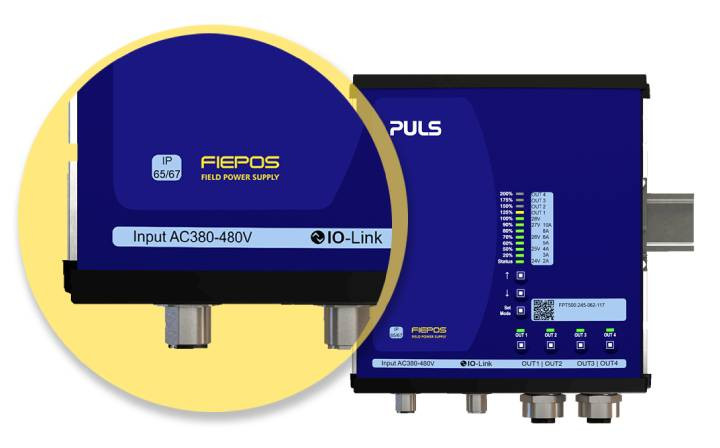IP Ratings Explained: Choosing the Right Power Supply
Educational | 09-10-2023 | By Maximilian Hülsebusch
IP ratings play a crucial role in determining how well an electrical device, such as a power supply, is shielded against external elements like dust and moisture. This article offers insights into the various IP codes available, their distinct differences, and the essential factors to weigh when choosing a power supply.
Environmental factors, including dust and moisture, can adversely affect the functionality of a power supply. Furthermore, the internal components of a power supply must be safeguarded from potential intrusions by objects like tools or wires, as well as unintended interactions by users. Recognising and adhering to the appropriate IP code, especially for power supplies positioned outside protective enclosures, is vital. It's not merely about ensuring operational efficiency; it's about guaranteeing safety and avoiding costly interruptions.

Decoding the IP Code Structure
Understanding the IP rating of a power supply is pivotal in assessing its protective capabilities against various external elements.
What is the IP rating of a power supply?
The IP rating provides a clear insight into a power supply's defence against both solid and liquid external factors. This universally recognised metric offers a snapshot of the device's resilience against potential environmental challenges.
The IP code typically starts with the abbreviation 'IP', standing for International Protection. Following this are two digits, each signifying a specific type of protection. The first digit showcases the device's protection against solid objects, ranging from larger entities like hands to finer particles such as dust. The second digit, on the other hand, indicates the device's resistance against liquids, spanning from minor splashes to continuous submersion.
By deciphering these digits and their respective implications, users can make informed decisions regarding the appropriateness of a power supply for certain environments and applications. The combined understanding of both digits in the IP code offers a comprehensive view of the device's overall protective capabilities, ensuring its safeguard against accidental contacts, dust ingress, or water exposures.
What is the difference between IP54 and IP65 rating?
Differentiating between various IP ratings is crucial to ensure the appropriate level of protection for distinct applications. Two such ratings that often come into focus are IP54 and IP65.
IP54 and IP65, while bearing some similarities, offer varied levels of protection. Both ratings are composed of two digits: the first digit signifies protection against solid objects, and the second digit denotes liquid protection.
IP54:
- Solid Protection ('5'): Offers protection against limited dust ingress, but it's not entirely dust-tight.
- Liquid Protection ('4'): Ensures protection against splashing water from any direction, making the device operational even when exposed to occasional splashes.
IP65:
- Solid Protection ('6'): The device is completely dust-tight, offering full protection against dust and other particulates.
- Liquid Protection ('5'): Similar to IP54, it ensures protection against water jets from any direction.
In summary, while both IP54 and IP65 offer substantial protection against liquids, IP65 stands out in terms of safeguarding against solid objects, especially dust. This differentiation becomes pivotal when choosing power supplies for settings where dust exposure might be a significant factor.

What is the IP20 rating?
When selecting power supplies for specific environments, understanding the nuances of IP ratings becomes paramount. One such rating that often garners attention, especially for indoor applications, is IP20.
The IP20 rating, like other IP ratings, is made up of two digits. The first digit, '2', indicates protection against solid objects larger than 12.5mm, such as fingers. However, it doesn't offer protection against finer particles like dust. The second digit, '0', denotes that there's no special protection against liquids. In essence, devices with an IP20 rating are not designed to withstand any form of moisture or water ingress.
Given its specifications, IP20-rated devices are typically suited for indoor environments where there's minimal risk of exposure to dust and water. These are often used in controlled settings like offices, residential spaces, or areas within industrial facilities that are free from significant dust or moisture. The primary advantage of IP20-rated power supplies is their protection against larger foreign objects, ensuring safety against accidental contacts.
In conclusion, the IP20 rating offers basic protection, making it apt for environments with minimal exposure risks. When selecting power supplies, understanding the limitations and strengths of this rating ensures that devices are used in settings where they can operate optimally and safely.
IP Ratings in Industrial Power Supplies
In the industrial sector, the choice of IP ratings plays a pivotal role in determining the durability and reliability of power supplies. These ratings offer a clear insight into how well a device can withstand environmental challenges, from dust and solid objects to various forms of moisture.
Common IP ratings in the industry have been established based on the typical environmental conditions these power supplies are exposed to. These ratings not only provide a measure of protection but also serve as a guide for manufacturers and users to ensure the optimal performance and longevity of their devices.
However, there are instances where standard IP ratings might not meet the unique requirements of specific applications. In such cases, the significance of customer-specific power supplies comes to the fore. These are tailored solutions, designed to offer protection levels that might not be covered by the standard IP ratings. Whether it's a heightened level of dust protection or resistance against specific liquid challenges, customer-specific power supplies ensure that the device operates seamlessly in its intended environment.
In essence, while standard IP ratings serve as a foundational guide, the availability of customer-specific solutions ensures that there's a power supply fit for every unique industrial challenge.
PULS Power's Offerings and the Future of IP Ratings
PULS Power has consistently been at the forefront of delivering high-quality power supplies, tailored to meet the evolving demands of the industry. Their range of products, especially those with specific IP ratings, stands as a testament to their commitment to quality and innovation.

One of the standout offerings from PULS Power is their FIEPOS switch-mode power supplies. As highlighted in the Figure above, these decentralised power supplies come with high IP ratings – IP54, IP65, or IP67. Designed for flexibility, they can be deployed directly in the field, ensuring reliability even in challenging environments.
The landscape of power supplies is rapidly changing, with decentralisation emerging as a dominant trend. As industries move towards more distributed systems, the importance of IP ratings has surged. Devices are now more frequently installed outside traditional protective cabinets, directly on machines or in the field. This shift underscores the need for power supplies, like those in the FIEPOS product family, that can withstand varied environmental challenges.
In conclusion, as the industry evolves and the trend for decentralisation gains momentum, PULS Power's commitment to offering power supplies with the right IP ratings ensures they remain a trusted partner for businesses navigating these changes.
Summary:
IP ratings serve as a critical metric in the world of power supplies, offering a clear indication of a device's resilience against a spectrum of external challenges. From protection against solid objects like dust and tools to resistance against varying degrees of moisture, these ratings provide a comprehensive view of a device's defensive capabilities.
The choice of an appropriate IP rating is not merely a technical specification but a decision that impacts the operational efficiency and longevity of power supplies. Depending on the environment and specific application, selecting the right IP rating ensures that power supplies function optimally, free from disruptions caused by external factors.
In essence, as industries evolve and the demands on power supplies grow more complex, understanding and choosing the right IP ratings remain paramount in ensuring safety, reliability, and performance. For those interested in diving deeper into specific ratings, here's a comprehensive guide on IP67 vs. IP68.

